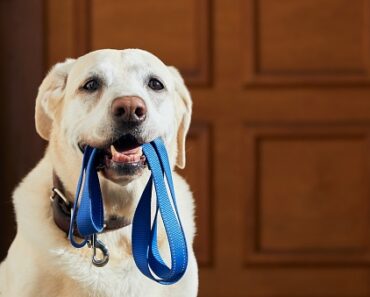If traveling with your dog seems natural to you, the experience can be complicated from an administrative or legal point of view. Flying with your dog means that you have to follow the regulations of the airline you are flying with and then respect the laws of the country you are flying to. Even to cross France by air, you will have to comply with the regulations in force. From your dog’s point of view, this mode of transportation is unfamiliar to him and can even be stressful. Here are a few tips to ensure your dog’s comfort, leave with peace of mind and enjoy your trip with your pet.

1/ Know the pet policy
If you don’t want as much trouble as Johnny Depp and his girlfriend with your adorable Chihuahuas, choose your destination carefully and don’t forget the possible stopovers! Some countries require a quarantine (at your expense): New Caledonia holds the record with a period of 1 to 6 months without your pet. There is no need to bring your dog for a short stay in French Polynesia, New Zealand, Australia or Japan. As for Mexico, your dog will stay 40 days without being able to leave the house. If you have a pit bull, an Argentinean dog or a fighting dog, it will not be allowed to enter the United Kingdom, Denmark or Thailand. Please note: no transient dog is accepted in Iceland, except in exceptional cases.
2/ Have the approval of the airline company
A large number of airlines accept 2 dogs per flight. You will have to inform the provider in advance and wait for his approval. Air France provides an online form to fill out. However, you will need to contact them by phone to validate the reservation. A minimum age is required, especially because of vaccinations. Ryanair, Air Asia and Easy Jet do not carry dogs on their planes. The route to Abu Dhabi is forbidden to dogs.
3/ Find out about transport standards
Your dog will travel in the cabin with you if its weight, once in the bag, does not exceed 8 kg. Animals weighing between 8 and 75 kg will be comfortable in the hold. Larger animals will travel as cargo. Some airlines do not tolerate any animals in the cabin: head for the baggage compartment if you are flying with Emirates or Qatar Airways to make room for the falcons! Air Canada asks passengers to slide the cage under their seat. Dogs with snub noses are not allowed in the hold despite their weight. No matter which airline you choose, you will never be able to let go of your companion during the flight.
4/ Choose an approved bag or crate
Whether your pet travels in the cabin or in the hold, you must provide him with an IATA bag or crate, i.e. one that is approved by the International Air Transport Association. Your dog must be able to stand, turn around and lie down in the crate. The crate must have two parts made of rigid plastic or fiberglass, held together by bolts. A centralized system makes it possible to close both sides of the door and the hinges must protrude 1.6 cm. A model with removable wheels simplifies the process. Remember to write the information on the cage.
5/ Present valid papers
To travel by plane with your dog, you must present his European passport, provided by the veterinarian. It must also be identifiable by a microchip. A Certificate of Good Health must be issued 24 hours before boarding. Check the opening hours of the veterinary services on site.
6/ Getting the vaccines in time
Ask your veterinarian in advance about mandatory vaccinations. Japan requires a rabies inoculation 180 days before visiting the country. All countries require a rabies vaccination, so puppies cannot travel until they are 3 months old. Additional vaccinations will allow you to travel to Norway, Australia or New Caledonia.
7/ Make your cage comfortable
Often the plane ride lasts several hours. Get your pet used to its carry-on bag. Provide a soft cushion and a disposable bed sheet. Hang his water bowl on the cage’s grill as planned.
8/ Provide an anti-stress solution
Not only does your dog feel your enthusiasm, but he’s leaving the ground with a deafening roar! Maybe he will need a treatment against motion sickness or an anti-stress product to ease his anxiety.
9/ Think about his harness and leash
These two accessories are essential if your dog gets out of its transport crate to go for an X-ray or to stretch its legs between two stopovers.
10/ Anticipate the steps to take upon your return
Going abroad implies obtaining a health certificate to return home. A delay of 10 days before departure is mandatory. It must be translated into French and provided with the original version.
Preparing a trip by plane with your dog requires some steps to anticipate. You won’t have any unpleasant surprises if you contact the airline company and ask the embassy about the formalities required by the host country. Some destinations do not allow you to travel with your dog in complete peace of mind. To have a good vacation, it is better to fly to a more welcoming place… or to find a boarding facility that meets your expectations.
Please note: naturally, guide dogs are exempt from all these restrictions and travel freely with their owners.






